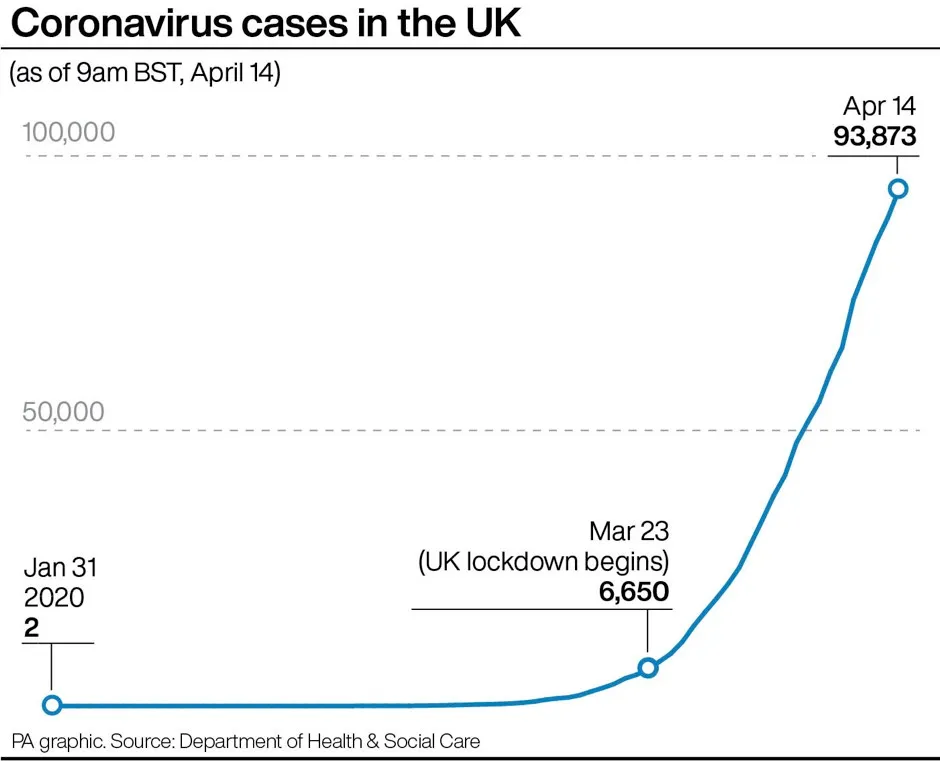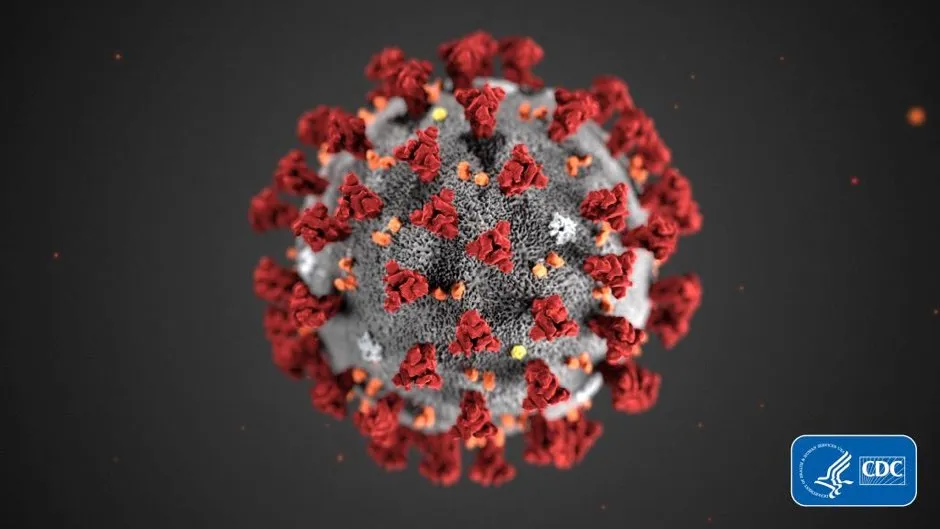More than two fifths of coronavirus transmissions occur before the infected person shows symptoms, new research suggests.
Scientists say patients with COVID-19 may begin to shed, or excrete, the infectious virus two or three days before the first symptoms appear.
According to a modelling study, several factors can affect the efficacy of control measures designed to prevent the spread of the disease.These include the time between successive cases in a chain of transmission (serial interval), and the incubation period.
If the serial interval is shorter than the incubation period, it would indicate that transmission may have happened before overt symptoms develop, researchers say.As a result, control measures that take place when symptoms begin to appear may have a reduced effect in controlling the spread of infection.
Read more about the spread of COVID-19:
- Coronavirus: Should we all wear face masks?
- Coronavirus: Is hand-washing really the best thing we can do to stop the spread of COVID-19?
Eric Lau from the School of Public Health, at the University of Hong Kong, and colleagues, looked at patterns of viral shedding in 94 patients with COVID-19 admitted to Guangzhou Eighth People’s Hospital in China.
Throat swabs were collected from these patients from when symptoms first appeared until 32 days later.In total, 414 swabs were analysed, and the authors found that the patients had the highest viral load at the onset of symptoms.
Separately, they modelled coronavirus infectiousness profiles from a different sample of 77 “transmission pairs” from publicly available data.Each transmission pair was made up of two patients with COVID-19 with a clear epidemiological link, with one patient highly likely to have infected the other.
Using this information, they inferred that infectiousness started 2.3 days before symptoms appeared and peaked at 0.7 days before their appearance.

The researchers estimated that 44 per cent of secondary cases were infected during the pre-symptomatic stage, with infectiousness predicted to decrease quickly within seven days.
The study published in Nature Medicine states: “Disease control measures should be adjusted to account for probable substantial presymptomatic transmission.”
The authors note that the limitations of the study include the reliance of the research on patients remembering the onset of symptoms, which may have introduced bias.
Read more about the coronavirus:
- How can I protect myself from the coronavirus when shopping?
- Intermittent social distancing needed 'until 2022' to contain coronavirus
Babak Javid, principal investigator, Tsinghua University School of Medicine, Beijing and consultant in infectious diseases at Cambridge University Hospitals, said: “This new study in Nature Medicine by Leung and colleagues confirms that for the vast majority of patients, most virus shedding of SARS-CoV2 occurs at, or before symptoms arise.
“Using these data and modelling approaches, they estimate that just under half of transmissions from cases where the most likely source of transmission was known, occurred before the source patient showed symptoms.
“These data have important implications for public health control measures such as whether masks should be worn by well people.

He adds that the research confirms a previous study which suggests maximal shedding of the virus appears to be before symptom onset.
Prof Javid said: “This is important because current public health control measures advised, for example, by the WHO and UK government assume that maximum contagion is after symptom onset.
“Hence one reason masks are not advocated for wearing by asymptomatic members of the public.”
Can I get the coronavirus twice?
There have been a few stories in the press of people apparently being re-infected by the coronavirus SARS-CoV-2. These people reportedly became infected and hospitalised, and then were sent home once they’d tested negative for the virus. Then, days or weeks later, they tested positive again.
But this doesn’t necessarily mean that they caught the coronavirus twice.
First, during recovery from infection, a person may have very low amounts of the virus remaining in their body – low enough that our tests can’t accurately detect it. In this case, the person may be sent home on the assumption that they’re virus-free.
However, their body may still be fighting the virus, and a resurgence of the virus (and symptoms) can occur, resulting in a positive test. In this case, it would just be one protracted infection, not a re-infection.
Second, we know that in most people, SARS-CoV-2 generates a strong response from the immune system. With the related coronavirus SARS-CoV, this response creates an immune memory of the virus that prevents re-infection for one to two years, and it’s likely that this is also the case for the new virus.
SARS-CoV-2 also has a fairly low mutation rate, which means that it (hopefully) won’t change enough that our immune system no longer remembers it (this is what the flu virus does and why we need a new jab every year).
If this all turns out to be true, then it would suggest that re-infections are unlikely and that the cases in the news reflect testing sensitivity. However, SARS-CoV-2 is so new that we won’t know for sure until we’ve found out just how protective our immune response to the virus is, and how long it lasts.
Read more: